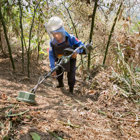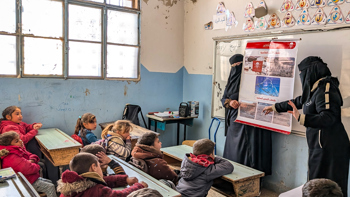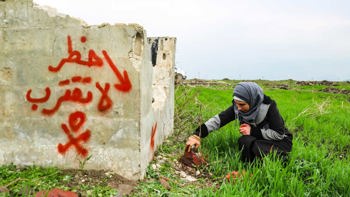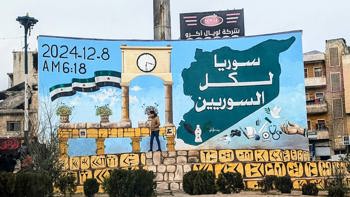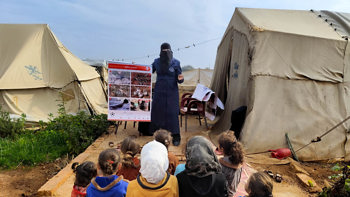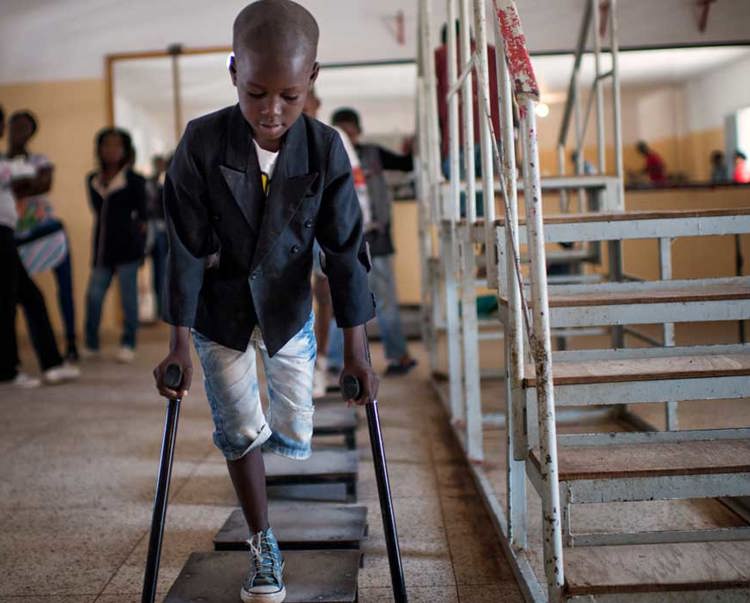The Gaza Strip is a small area of 141 sq miles on the Southeast coast of the Mediterranean Sea. Along with the West Bank, the two areas make up the Palestinian territories.
HALO began work here in 2025. We're surveying for explosives, so we have a clear map of hazardous areas to inform our future clearance work. We also provide safety training to the local people.

Situation in the Gaza Strip
There has been an intense conflict in the Gaza Strip since October 2023, when Israel responded to an attack by Hamas. This has left large areas of the territory contaminated with unexploded bombs, shells, missiles, and improvised explosives, fired by both sides. Their presence endangers local people seeking shelter, humanitarian aid and medical treatment.
The UN Satellite Centre assessment in summer 2025 found that 78% of structures have been damaged or destroyed, along with 77% of roads.
A large proportion of explosives typically fail to detonate as intended. Urban warfare leaves a lethal legacy of rubble contaminated with explosives that hamper the delivery of aid. No one knows for sure how much unexploded weaponry remains in the rubble, but it is likely to be thousands of tons.
These explosives prevent displaced families from returning home and hinder healthcare, education, utilities, shelter, and rubble management. The swift disposal of unexploded ordnance is vital to the reconstruction of Gaza.

HALO's work and impact in the Gaza Strip

When a ceasefire was agreed in early 2025, HALO teams began work assessing the risk of explosive hazards in buildings and on aid routes. For safety reasons we had to withdraw our teams when the ceasefire ended, but they returned in late 2025 following the Sharm El-Sheikh Peace Summit and Gaza Peace Plan.
Our bomb disposal experts are checking resettlement camps for explosive hazards. Many of these are former UN schools, now home to many people whose homes have been destroyed. Once conditions allow, we plan to use controlled detonations to destroy unexploded bombs and other devices in Gaza.
HALO has developed techniques to deal with dangerous debris in recent urban battlefields such as Falluja in Iraq, Sirte in Libya and Ta’iz in Yemen. It's a specialism we developed when clearing West Kabul in the mid-1990s.
Since 2013, HALO has been conducting mine clearance operations in the West Bank.
HALO's partnerships in the Gaza Strip
HALO coordinates our work with the UN Mine Action Service's humanitarian response to the Gaza conflict.
HALO is currently working on behalf of the UN Development Programme, which is spearheading rubble removal projects here. We're running explosive hazard assessments across the many millions of tonnes of rubble that litters Gaza.
HALO also works with local staff and partner organisations to develop safety training materials. We help to keep people safe on streets that have been the scenes of battles and airstrikes.
With our support, HALO's Palestinian NGO partner provides pop-up safety education sessions for displaced families in resettlement camps.

"We conduct explosive hazard assessments in key facilities such as schools, where five or six families shelter in what remains of a classroom, often next to multiple floors of pancaked rubble. The debris across Gaza will contain huge amounts of explosives, and will need to be made safe as an urgent priority."


